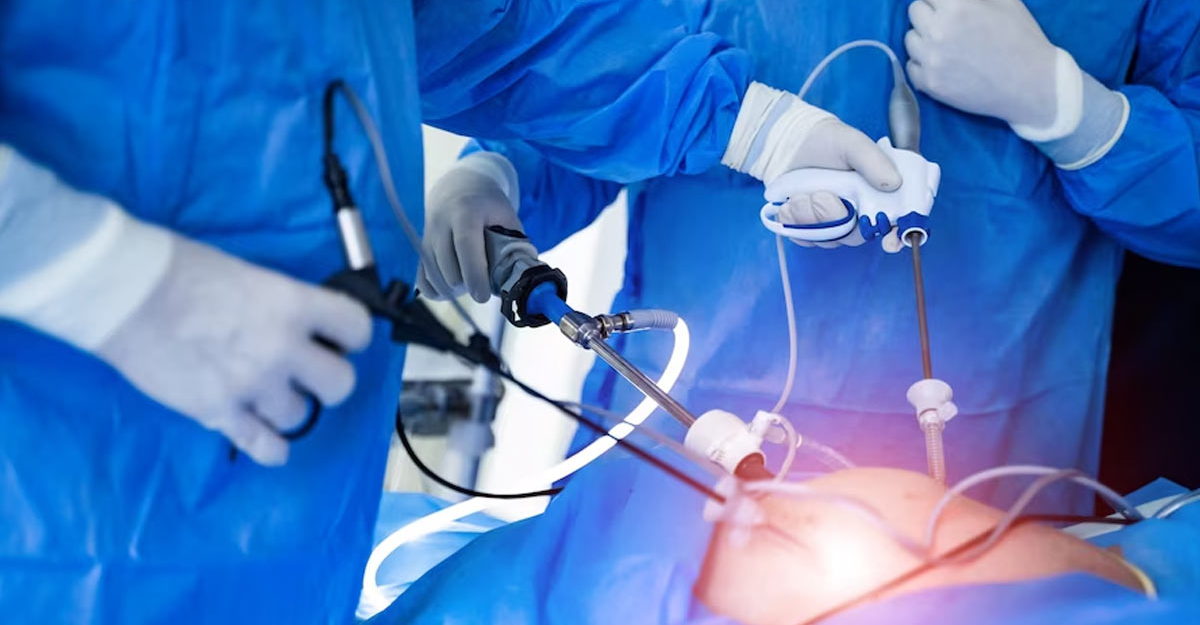The field of pancreatic surgery has been completely transformed by the advent of robotic surgery. This groundbreaking technology provides patients with a minimally invasive alternative that has the potential to improve recovery and outcomes. Traditionally, pancreatic surgery has been associated with open procedures, but the introduction of robotics has brought about a paradigm shift in the approach to this type of surgery.
This blog delves into the profound influence of robotic pancreatic surgery on patient outcomes and recovery, illuminating the progress and benefits that this groundbreaking approach offers.
The Evolution of Pancreatic Surgery
To fully grasp the importance of robotic pancreatic surgery, it is crucial to delve into the evolutionary journey of pancreatic surgical techniques. Historically, open surgery has served as the conventional method for pancreatic procedures, granting surgeons direct access to the pancreas. However, advancements in medical technology have introduced alternative approaches that offer improved precision, reduced invasiveness, and faster recovery times.
The Rise of Minimally Invasive Techniques
The emergence of minimally invasive techniques represented a remarkable milestone in the field of pancreatic surgery. By employing laparoscopic procedures, which utilize small incisions and a laparoscope equipped with a camera, the invasiveness of surgical interventions was significantly reduced. This advancement not only enhances the precision and efficacy of the procedures but also minimizes patient discomfort and promotes faster recovery.
Robotic pancreatic surgery has emerged at the forefront of minimally invasive procedures, pushing the boundaries of medical advancements. By harnessing advanced technology, surgeons have gained unparalleled control, 3D visualization, and enhanced dexterity. The robotic platform offers a precise and delicate approach to pancreatic procedures, presenting a viable alternative to open surgery and traditional laparoscopy.
Patient Outcomes in Robotic Pancreatic Surgery
Reduced Blood Loss and Complications
Robotic pancreatic surgery offers a significant benefit: the potential to minimize blood loss during the procedure. By providing surgeons with a highly magnified, three-dimensional view of the operating field, the robotic system enables precise control and enhances the accuracy of dissection. This advanced technology not only ensures improved surgical outcomes but also enhances patient safety. This improved precision results in minimal harm to surrounding tissues and blood vessels, leading to decreased bleeding and a lower likelihood of complications.
Research suggests that employing robotic pancreatic surgery leads to fewer postoperative complications when compared to traditional open surgery. Robotic systems offer enhanced visualization and maneuverability, resulting in a meticulously controlled surgical environment that ultimately leads to superior patient outcomes.
Quicker Recovery and Shorter Hospital Stays
Robotic pancreatic surgery has been associated with reduced hospital stays and faster recovery times compared to conventional open procedures. The minimally invasive approach of robotic surgery allows for smaller incisions, leading to decreased postoperative pain and a quicker resumption of normal activities. This advancement in surgical technology not only enhances patient outcomes but also improves overall quality of life. Patients who undergo robotic pancreatic surgery frequently enjoy a shorter recovery period and can promptly return to their daily routines compared to those who undergo open surgery.
Robotic procedures offer the benefit of minimizing trauma to surrounding tissues, which in turn promotes a faster recovery process. This accelerated healing allows patients to regain functionality and restore their quality of life more swiftly. This aspect is particularly crucial in the realm of pancreatic surgery, where the intricacies of the pancreas and its proximity to vital organs pose unique challenges to the recovery process.
Enhanced Precision in Tumor Resection
The removal of pancreatic tumors requires precise and meticulous resection to ensure complete elimination while preserving healthy surrounding tissue. Robotic pancreatic surgery offers surgeons enhanced precision in tumor removal, thanks to the articulation and maneuverability of robotic instruments. The three-dimensional visualization provided by the robotic system enables surgeons to navigate complex anatomical structures with greater accuracy, thereby minimizing the risk of leaving behind any residual tumor tissue.
Enhanced precision in tumor resection not only leads to improved oncological outcomes but also plays a vital role in minimizing postoperative complications and promoting expedited recovery for patients undergoing robotic pancreatic surgery.
Lower Rates of Surgical Site Infections
Surgical site infections (SSIs) present a major concern in pancreatic surgery, resulting in longer hospital stays and higher healthcare expenses. Robotic pancreatic surgery has shown lower SSI rates when compared to open procedures. The use of smaller incisions and reduced tissue trauma in robotic surgery decreases the risk of infection, offering an additional advantage for postoperative recovery. By optimizing surgical techniques, we can mitigate the potential complications associated with SSIs, ultimately improving patient outcomes and reducing healthcare burdens.
Reduced Blood Loss and Transfusion Rates
The delicate nature of pancreatic surgery often involves significant blood loss, which can lead to higher transfusion rates. In contrast, the use of robotic technology allows for increased precision and control during the procedure, resulting in lower blood loss and reduced need for transfusions. This not only minimizes the risk of potential complications associated with blood transfusions but also promotes a faster recovery for patients.
Conclusion
Robotic pancreatic surgery is a groundbreaking advancement in the realm of pancreatic procedures. It not only enhances patient outcomes but also accelerates the recovery process when compared to conventional open surgeries. The transition from open procedures to minimally invasive techniques has paved the way for the emergence of robotic technology, equipping surgeons with advanced tools to augment precision and control during delicate pancreatic procedures.
Robotic pancreatic surgery offers numerous benefits, including reduced blood loss, lower complication rates, quicker recovery, and shorter hospital stays. These advantages underscore the positive impact of this innovative approach on patient outcomes. As technology continues to advance, it is expected that robotic surgery will play an increasingly prominent role in the field of pancreatic surgery. Ultimately, this will lead to improved quality of life for individuals suffering from pancreatic disorders and diseases.

